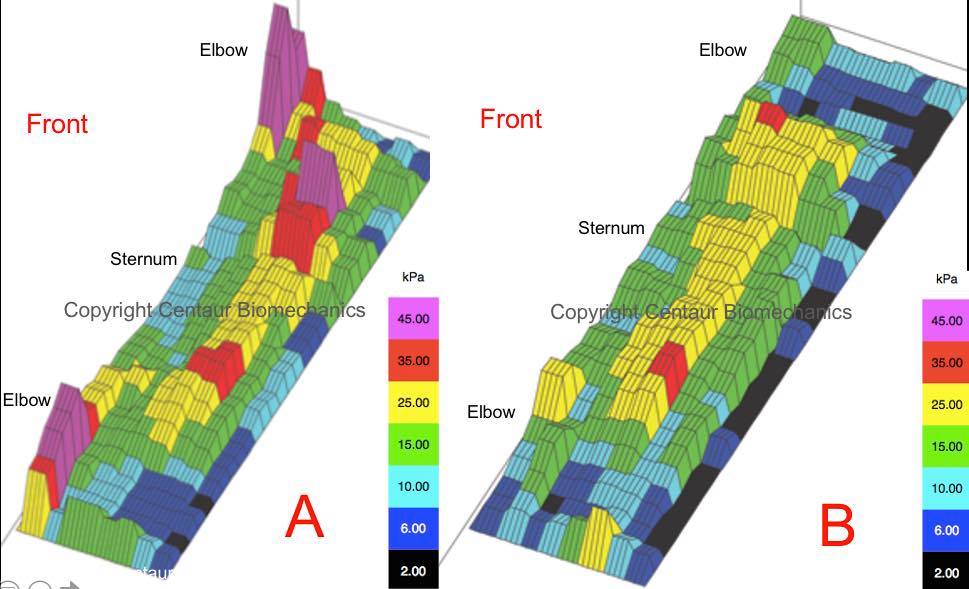
Dr. Russell MacKechnie-Guire
January 2021
Previously it has been assumed that the highest pressures beneath the girth are localised to the sternum. From a study we did before the London 2012 Olympics, using an electronic pressure mat positioned beneath the girth combined with motion capture, we quantified the effect that girth fit and design has on grith pressures and locomotion (1). In that study we demonstrated that, contrary to popular belief, areas of high pressures were localised behind the elbow and not on the sternum.
We observed areas of high pressure beneath girths in dressage, jumping and event horses, across all gaits (walk, trot & canter) (1) and more recently we have demonstrated the areas of high pressures in racehorses galloping occurs in the same region as previously described, behind the elbows. When girth pressures were reduced with girth modifications, the horses gait altered across all disciplines, highlighting the effect that girth pressures can have on locomotion.
We must not underestimate the effect that girth fit and design can have on locomotion. A girth that causes high pressures will cause the horse to seek a compensatory strategy to alleviate the discomfort caused, in this case by the girth. It should be noted that the areas of high pressure occurred every stride, therefore in a schooling session, in a girth which is poorly designed and or doesn’t fit, the horse is experiencing areas of high pressure behind the elbows every stride.
Some of the take home messages:
- Ensure the girth buckles are up as high as possible - away from the sensitive areas behind the elbows
- If using a martingale or training aid, which goes around the girth, caution should be taken as you will create a ridge of pressure on the sternum. Consider using a girth which has the girth attachment on the outside of the girth.
- Anatomically shaped girths with medical grade closed cell foam are preferred as they do not deform and help to reduce girth pressures
- Make sure the inside of the grith does not have cracks
- Ensure that girth buckles (left and right) are equal +- one hole
- Make sure that the girth is fitted in relation to the horse’s anatomy
Since this study, there are a lot of girths on the market which claim to be pressure relieving and or allow “freedom”. Whilst I am supportive of new designs for the good of the horse, users must be cautious over such claims which are not supported by evidence and particularly look at the fit and design of the girth, as from this study, girth fit and design must not be underestimated.
Please share to raise awareness of girth fit.
Hope the above is of interest.
Kind Regards
Dr Russell MacKechnie-Guire
www.centaurbiomechanics.co.uk
1) Murray R, Guire R, Fisher M, Fairfax V. Girth pressure measurements reveal high peak pressures that can be avoided using an alternative girth design that also results in increased limb protraction and flexion in the swing phase. Vet J. 2013;198(1):92-7.
#lockdownblog #equineresearch #biomechanics #centaurbiomechanics #equinephysiotherapy #equinetherapist #onlinecourses